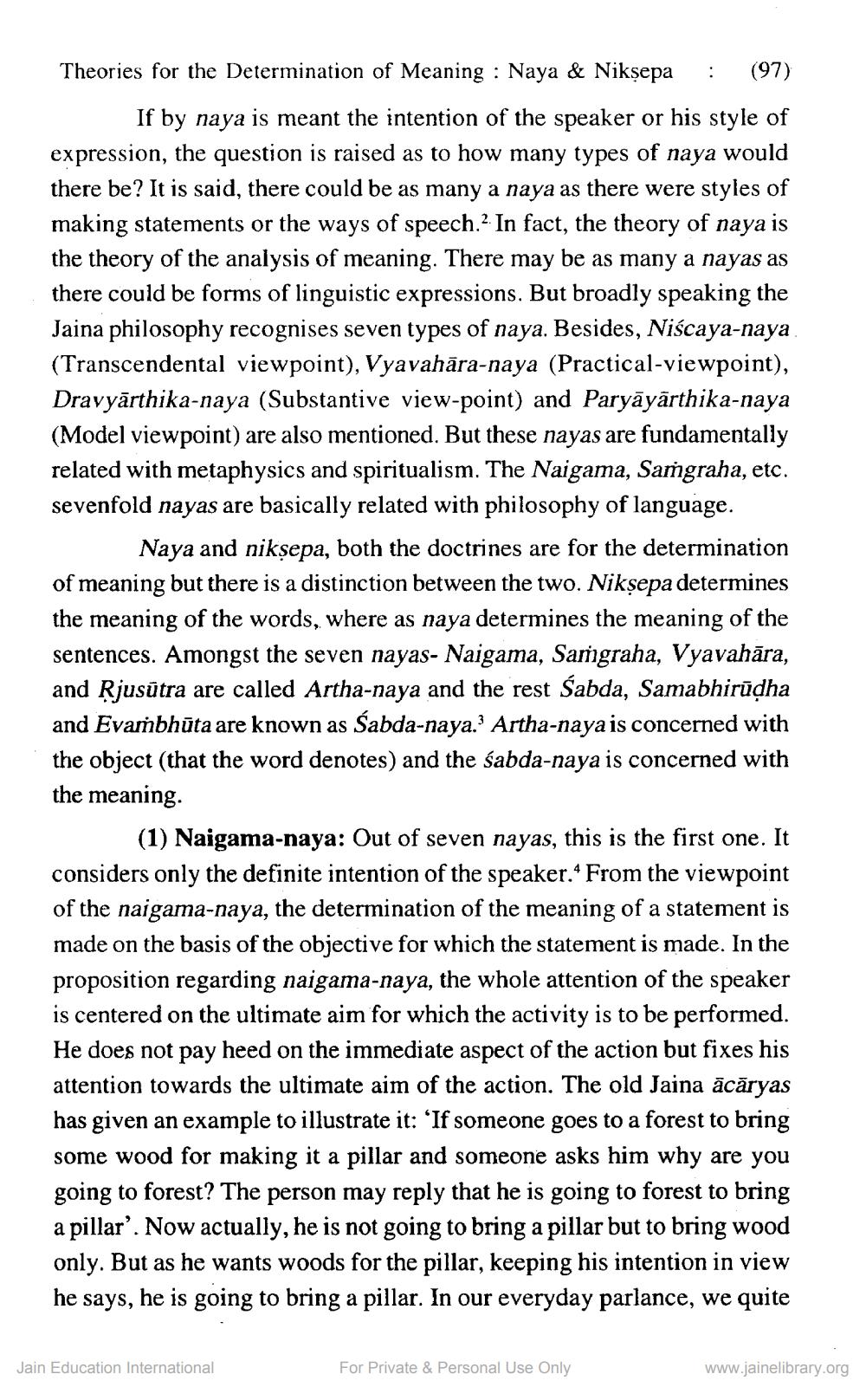________________
Theories for the Determination of Meaning: Naya & Nikṣepa : (97)
If by naya is meant the intention of the speaker or his style of expression, the question is raised as to how many types of naya would there be? It is said, there could be as many a naya as there were styles of making statements or the ways of speech.2 In fact, the theory of naya is the theory of the analysis of meaning. There may be as many a nayas as there could be forms of linguistic expressions. But broadly speaking the Jaina philosophy recognises seven types of naya. Besides, Niścaya-naya (Transcendental viewpoint), Vyavahāra-naya (Practical-viewpoint), Dravyarthika-naya (Substantive view-point) and Paryāyārthika-naya (Model viewpoint) are also mentioned. But these nayas are fundamentally related with metaphysics and spiritualism. The Naigama, Saṁgraha, etc. sevenfold nayas are basically related with philosophy of language.
Naya and nikṣepa, both the doctrines are for the determination of meaning but there is a distinction between the two. Nikṣepa determines the meaning of the words, where as naya determines the meaning of the sentences. Amongst the seven nayas- Naigama, Samgraha, Vyavahāra, and Ṛjusūtra are called Artha-naya and the rest Śabda, Samabhirūḍha and Evambhūta are known as Śabda-naya.3 Artha-naya is concerned with the object (that the word denotes) and the śabda-naya is concerned with the meaning.
(1) Naigama-naya: Out of seven nayas, this is the first one. It considers only the definite intention of the speaker. From the viewpoint of the naigama-naya, the determination of the meaning of a statement is made on the basis of the objective for which the statement is made. In the proposition regarding naigama-naya, the whole attention of the speaker is centered on the ultimate aim for which the activity is to be performed. He does not pay heed on the immediate aspect of the action but fixes his attention towards the ultimate aim of the action. The old Jaina ācāryas has given an example to illustrate it: 'If someone goes to a forest to bring some wood for making it a pillar and someone asks him why are you going to forest? The person may reply that he is going to forest to bring a pillar'. Now actually, he is not going to bring a pillar but to bring wood only. But as he wants woods for the pillar, keeping his intention in view he says, he is going to bring a pillar. In our everyday parlance, we quite
Jain Education International
For Private & Personal Use Only
www.jainelibrary.org




